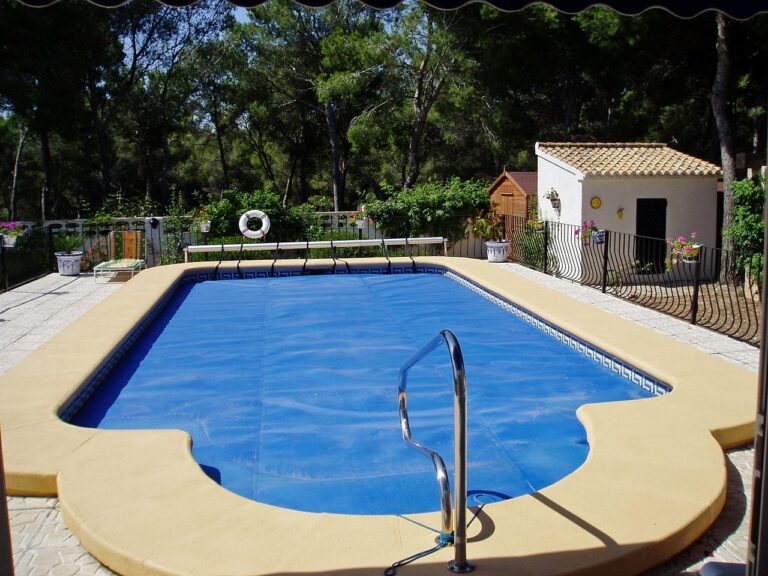Achieving Carbon-Neutral Homes through Sustainable Architecture
Sustainable architecture plays a critical role in reducing our carbon footprints by integrating eco-friendly design elements that minimize energy consumption and waste production. By incorporating renewable materials, energy-efficient systems, and passive design strategies, sustainable buildings can significantly lower their environmental impact throughout their lifecycle. This approach not only benefits the planet by decreasing greenhouse gas emissions but also helps to create healthier and more livable spaces for occupants.
Furthermore, sustainable architecture promotes a shift towards more responsible and conscious design practices that prioritize environmental stewardship. By considering factors such as site orientation, natural ventilation, and building materials with low embodied carbon, architects and designers can create buildings that are more resilient, energy-efficient, and environmentally sustainable. As the demand for sustainable solutions continues to grow, embracing eco-friendly design principles in architecture becomes imperative in addressing climate change and building a more sustainable future.
Understanding the Concept of Carbon Neutrality in Residential Buildings
Carbon neutrality in residential buildings refers to achieving a balance between the carbon emissions produced and the carbon dioxide removed from the atmosphere. It involves minimizing energy consumption through efficient design and utilizing renewable energy sources to offset any remaining carbon emissions. By embracing sustainable practices such as energy-efficient appliances, insulation, and passive heating and cooling techniques, residential buildings can significantly reduce their carbon footprint.
One key aspect of achieving carbon neutrality in residential buildings is the integration of renewable energy sources like solar panels, wind turbines, or geothermal systems. These green technologies allow homeowners to generate clean energy on-site, reducing their reliance on fossil fuels and lowering their overall carbon emissions. Additionally, adopting smart energy management systems can further optimize energy usage and ensure that properties operate in an environmentally responsible manner.
Innovative Design Strategies for Achieving Carbon-Neutral Homes
When designing homes with the goal of achieving carbon neutrality, one key strategy is optimal insulation. By ensuring that the building envelope is well-insulated, heat loss can be minimized in the winter and heat gain in the summer, reducing the need for artificial heating and cooling systems. This not only lowers energy consumption but also decreases the carbon emissions associated with maintaining a comfortable indoor environment.
Another effective design strategy for carbon-neutral homes is the integration of passive solar techniques. Orienting the building to take advantage of natural sunlight and ventilation can help regulate indoor temperatures and reduce the reliance on mechanical heating and cooling systems. By harnessing the power of the sun through features like large south-facing windows and thermal mass materials, homeowners can significantly decrease their carbon footprint while also benefiting from lower energy bills.
• Optimal insulation is key for achieving carbon-neutral homes
• Well-insulated building envelope minimizes heat loss in winter and heat gain in summer
• Reduces need for artificial heating and cooling systems, lowering energy consumption and carbon emissions
• Integration of passive solar techniques is another effective design strategy
• Orienting the building to take advantage of natural sunlight and ventilation helps regulate indoor temperatures
• Reduces reliance on mechanical heating and cooling systems
• Features like large south-facing windows and thermal mass materials harness the power of the sun
What is the importance of sustainable architecture in reducing carbon footprints?
Sustainable architecture focuses on designing buildings that minimize negative environmental impacts, including reducing carbon emissions. By using eco-friendly materials, energy-efficient systems, and sustainable design principles, sustainable architecture can significantly decrease a building’s carbon footprint.
How can carbon neutrality be achieved in residential buildings?
Carbon neutrality in residential buildings can be achieved by implementing a combination of energy-efficient design strategies, utilizing renewable energy sources, and reducing overall energy consumption. This includes insulating buildings properly, using energy-efficient appliances, and incorporating solar panels or wind turbines for renewable energy generation.
What are some innovative design strategies for achieving carbon-neutral homes?
Some innovative design strategies for achieving carbon-neutral homes include passive solar design, green roofs, rainwater harvesting systems, and high-performance building envelopes. Additionally, incorporating smart home technology and utilizing sustainable materials can further enhance a home’s energy efficiency and reduce its carbon footprint.







